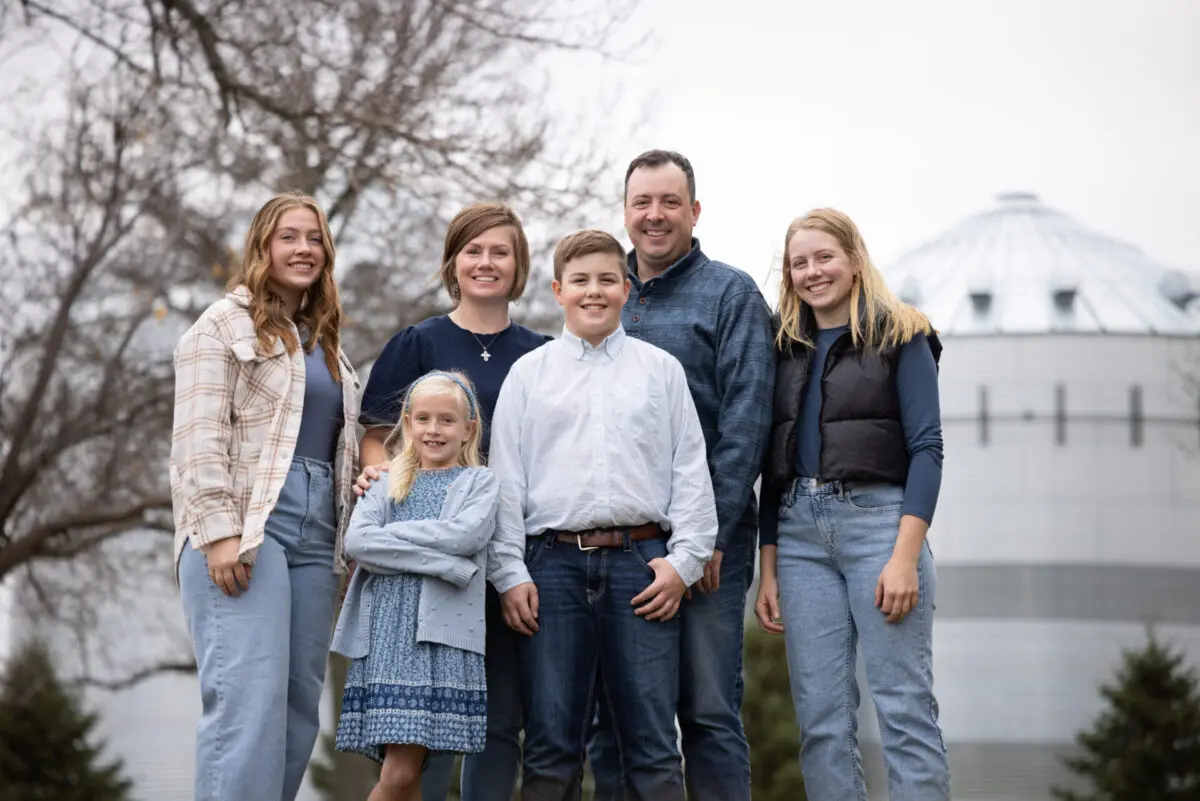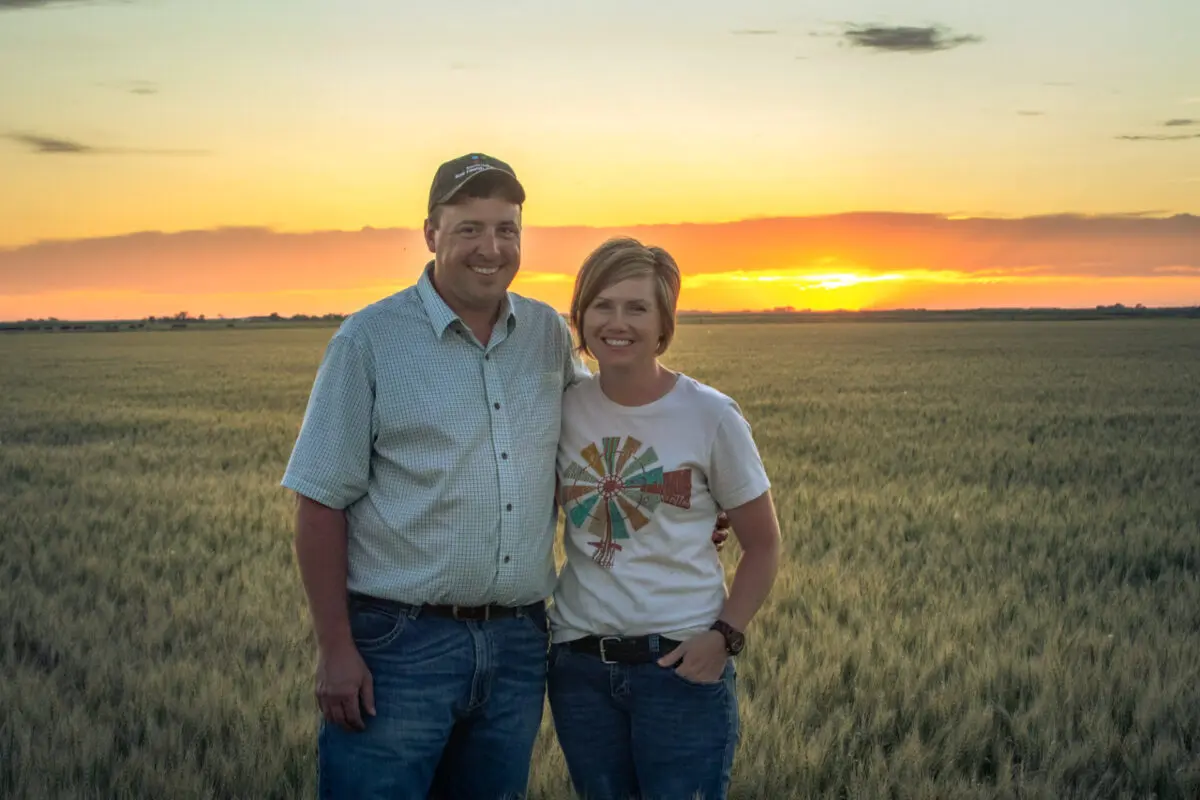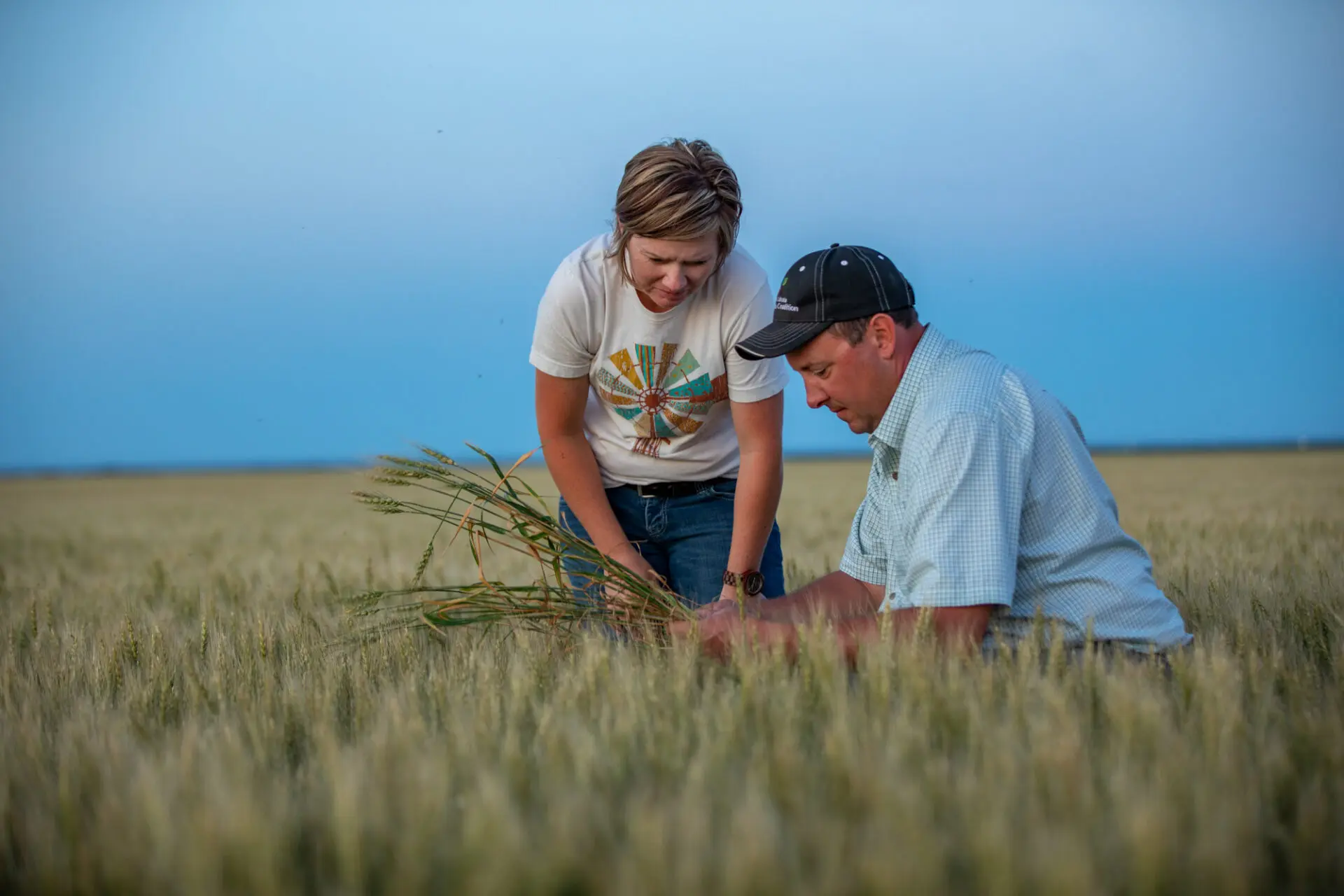The Johnson Family’s Conservation-Minded Legacy in South Dakota
On the wide, open plains of South Dakota, Brian and Jamie Johnson are growing more than crops. They’re raising cattle, kids and a conservation-driven future, one cover crop and no-till pass at a time.
Brian’s family has farmed this land for generations. Back in the 1980s, his father was among the first in the region to embrace no-till farming, years ahead of the curve. Equipment wasn’t readily available, so he worked directly with implement manufacturers to modify machines and make them work.
“He did all the hard legwork,” said Jamie Johnson, South Dakota wheat commissioner. “We’re lucky to do the fun part now.”
Johnson, originally from Nebraska, has farmed alongside her husband Brian since their marriage 20 years ago. Today, the two manage the day-to-day operation, supported by Brian’s mostly retired parents and their four children: Ella (18), Lila (16), Leo (13) and Evelyn (8). Whether it’s in the field during harvest or working cattle around school schedules, everyone pitches in where they can.

The Johnsons grow a mix of crops, rotating between wheat, corn, soybeans and rye. While wheat isn’t as common in their area as corn and soybeans, they continue to plant it, not for short-term gain but for the long-term benefits it brings to their land.
“Wheat doesn’t always pay the highest, but it has so much value in our rotation,” said Johnson. “It’s about soil health, grazing potential and keeping our land resilient.”
Other than wheat, the Johnsons have many other conservation tactics; they’ll often fly rye seed into standing corn in the fall. The rye germinates and establishes before winter, becoming either a grazed forage in spring or a green cover crop before soybeans go in. The system blends flexibility with function, which is especially valuable in regions where moisture and timing can make or break a season.
Their 125-head commercial Angus herd grazes across roughly a third of their crop ground, thanks to a network of water tanks and underground lines installed to connect pastures and fields.
“We put those tanks in a few years ago to better rotate cattle onto our crop ground,” Johnson said. “Now we can use that land more efficiently for both grazing and soil health.”
The Johnsons also share leadership roles beyond the farm. Brian sits on the board of the South Dakota Soil Health Coalition, and Jamie serves on the South Dakota Wheat Commission. Both roles reflect their values on their land, stewardship, education and community.
While conservation is front and center, family is woven into everything they do. One of Jamie’s favorite farm memories is from a wheat harvest years ago when she was pregnant with Evelyn. She was in the combine, Brian was hauling grain with the older kids, and the sun was setting over a sea of golden wheat.

“It was just us out there,” she remembers. “One of those moments where you realize this is our life, and it’s a pretty good one.”
Looking ahead, the Johnsons are focused on more than yield. They’re thinking about what it means to transition the farm to the next generation, not just financially but emotionally.
“We’ve come to terms with being the pass-through generation,” Jamie says. “We don’t own much of the land, but our job is to hold it together and give our kids a shot at staying here.”
That sense of duty to their family, their land and their future is what keeps their farm moving forward. Open to change but rooted in tradition, the Johnsons are quietly building something lasting.
In Jamie’s words, “We try things. We stay curious. We keep wheat in our rotation, even when others drop it. Because sometimes, the most valuable things on a farm don’t show up on a spreadsheet; they show up in the soil, in your kids’ footsteps and in the way your land looks after harvest.”
